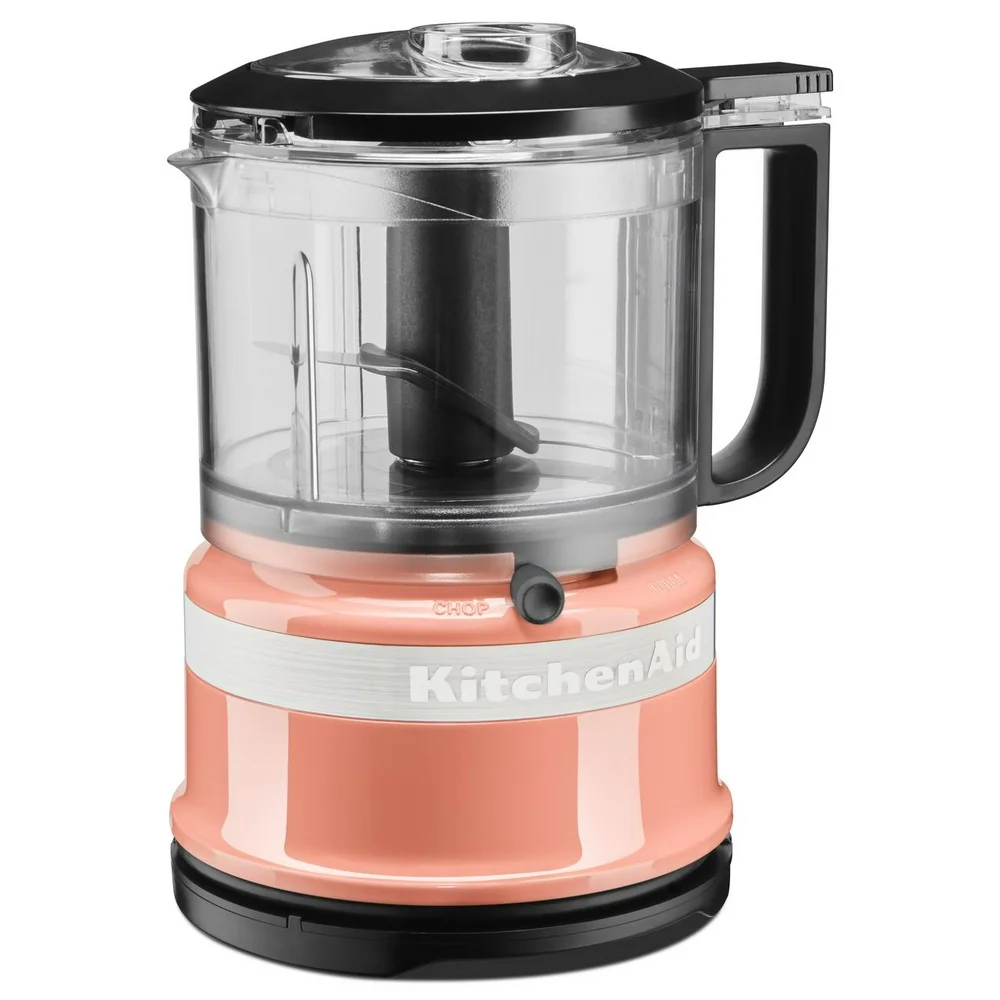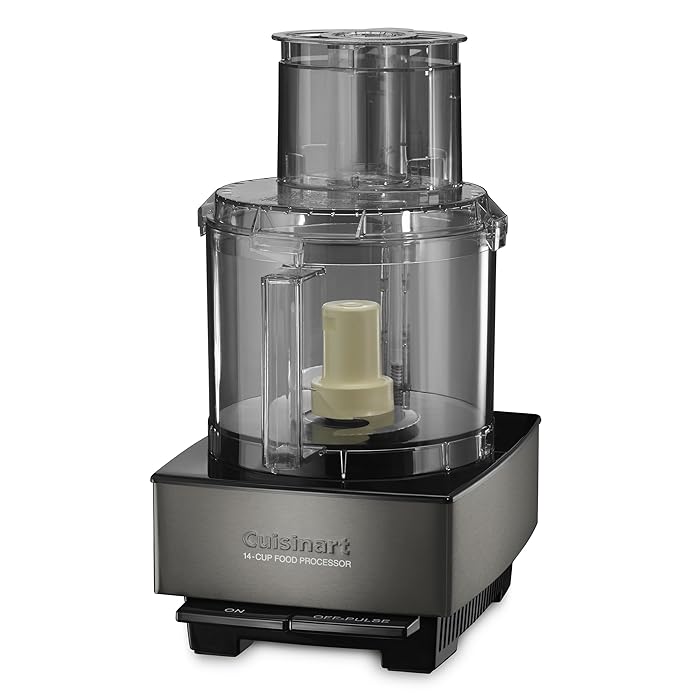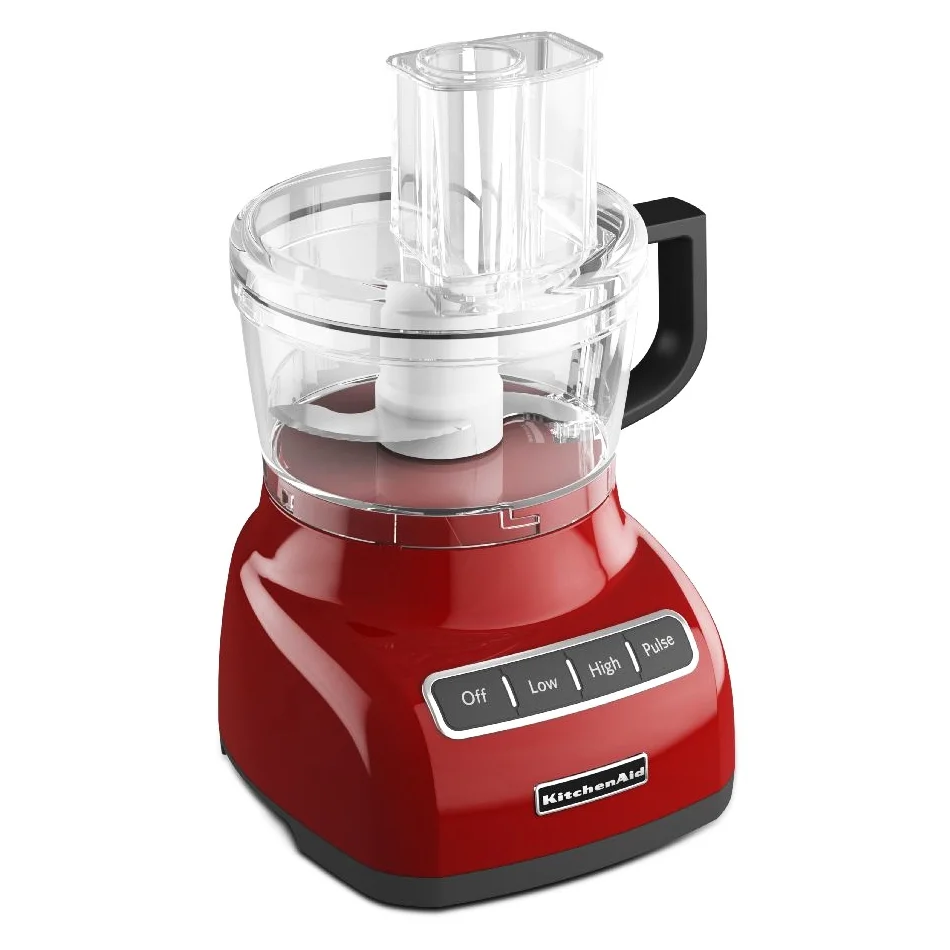
Introduction to Food Processors
In the realm of kitchen appliances, food processors stand out as versatile multitaskers, adept at effortlessly slicing, dicing, and blending ingredients. These powerful gadgets are essential for anyone looking to streamline their cooking process, making meal prep quicker and more efficient. Food processors come in various sizes and configurations, tailored to meet the diverse needs of home cooks and professional chefs alike.

Two major players dominate this space: Cuisinart and Kitchenaid. Both brands have garnered loyalty among culinary enthusiasts for their reliable performance and innovative designs. As we delve into the specifics of Cuisinart and Kitchenaid food processors, we’ll explore their key features, assess their strengths and weaknesses, and provide a comparative analysis to help you determine which brand’s food processor is the ideal assistant in your culinary endeavors.
Overview of Cuisinart Food Processors
When it comes to the Cuisinart brand, food processors stand as a hallmark of quality and versatility. This brand offers an extensive line of food processors that cater to diverse kitchen needs. From compact models perfect for small tasks to larger units designed to handle more demanding culinary projects, Cuisinart has maintained its position in kitchens worldwide.
Key Features and Models
Cuisinart food processors boast a range of features that enhance their utility. Key models include the Cuisinart 14-cup food processor known for its durability and the 3-cup mini-prep model ideal for smaller tasks. Other notable models include the mid-range 9-cup food processor, which strikes a balance between size and functionality. These processors are equipped with sharp blades, multiple speed settings and a robust motor that stands up to a variety of ingredients.
Pros and Cons of Cuisinart Models
Pros of Cuisinart food processors include their powerful motors, which can handle tasks such as kneading tough dough and chopping hard vegetables with ease. The variety of sizes and attachments available makes them adaptable to many jobs. Conversely, cons may involve the higher price point of some models along with the physical space they occupy, which could be a drawback for users with limited kitchen space. Additionally, some users report that chopping can be less uniform than expected, requiring occasional manual intervention to ensure consistency.
Overview of Kitchenaid Food Processors
Kitchenaid food processors are renowned for their robust construction and sleek designs, appealing to both home cooks and professionals. These processors vary in size from compact models suitable for small kitchens to more substantial versions designed for frequent use.
Key Features and Models
Kitchenaid food processors come with a range of impressive features. Notably, the UltraTight seal system prevents spills, and the ExactSlice system enables precise thickness adjustments for slicing. Models such as the 7-cup food processor and the expansive 13-cup version demonstrate the brand’s commitment to providing options tailored to varying needs. The inclusion of multiple speed settings such as low, high, and pulse options adds to the versatility of these appliances.
Pros and Cons of Kitchenaid Models
Pros: Kitchenaid processors are known for their durability and reliability. Features like the 2-in-1 feed tube allow for flexibility with ingredient sizes. Their appealing design and availability in various colors make them a favorite among aesthetically inclined users.
Cons: On the downside, some models can be slightly more expensive compared to competitors. There have been reports of these processors being prone to overheating, and some users find them a bit bulky for smaller kitchen spaces. Additionally, the plastic feel might not appeal to everyone, suggesting a compromise in build quality compared to more premium, metal models.
Comparative Analysis: Performance and Usability
When comparing Cuisinart vs Kitchenaid food processors, gauging their performance and usability is crucial. These factors largely influence a buyer’s decision, so let’s dive into how these brands stack up in terms of power and efficiency, as well as ease of use and maintenance.
Power and Efficiency
Cuisinart food processors generally offer robust motors across their models, providing the power needed for tougher jobs like kneading dough. The higher wattage in some Cuisinart models translates to efficient processing of hard ingredients. Kitchenaid, while boasting reliable performance, occasionally faces reports of overheating, especially in models with lower wattage compared to Cuisinart.
In a head-to-head comparison, Cuisinart might edge out Kitchenaid in this category, particularly for heavy-duty tasks. However, for everyday slicing and dicing, Kitchenaid’s precise controls still deliver efficient and consistent results.
Ease of Use and Maintenance
Both Cuisinart and Kitchenaid design their food processors with user-friendliness in mind. Kitchenaid’s processors typically stand out for their tool-free assembly, intuitive controls, and attachments that are easy to clean. Cuisinart, on the other hand, offers straightforward functionality with a focus on durability.
Maintenance-wise, Cuisinart models may demand more effort in cleaning due to their more complex designs and sometimes less-intuitive disassembly. Kitchenaid processors, noted for easy cleanup, can be more manageable post-use, although the caveat is that frequent dishwasher use might affect durability.
In sum, for those prioritizing hassle-free upkeep, Kitchenaid might have a slight advantage in this area, provided users take care to hand-wash to preserve the life of the appliance. Meanwhile, Cuisinart’s processors require a bit more work but may offer longer term resilience.
 Special Features Comparison
Special Features Comparison
When evaluating the special features of Cuisinart and Kitchenaid food processors, it’s clear that both brands have gone the extra mile to ensure their appliances stand out in the market. Let’s break down some of the unique aspects that each brand brings to the table.
Unique Aspects of Cuisinart
Cuisinart food processors often come equipped with more robust motors, making them ideal for users who require a machine capable of handling denser materials and more rigorous tasks. A standout feature is their Powerful Dough-Making capability, enabling the processor to knead bread and pizza doughs with ease — a boon for home bakers.
The Seamless Touchpad Controls are another innovative addition, facilitating an easier cleaning process and offering a sleek design aesthetic. For those with limited storage, the Nested Bowls design allows multiple bowls to fit inside each other, saving valuable kitchen space.
Unique Aspects of Kitchenaid
Kitchenaid food processors come with their proprietary ExactSlice System, which gives users precise control over the thickness of slices directly from the external lever, catering well to those who appreciate customization.
Another specific feature is the UltraTight Seal Technology, which employs a leak-resistant ring, preventing spills even when the processor is filled to the brim. Kitchenaid also offers a Color Range to suit any kitchen decor, and their Mini Food Processor is a stylish yet functional appliance for smaller tasks that don’t require a full-sized processor.
By offering these specialized features tailored to different culinary needs, both Cuisinart and Kitchenaid have secured their spots as leading brands in the food processor category.
User Experiences and Reviews
When selecting a food processor, user experiences and reviews often play a pivotal role. Both Cuisinart and Kitchenaid food processors have received acclaim, but also some criticisms. User testimonials can provide valuable insights into the real-world performance of these appliances.
Common Praises and Critiques
Cuisinart models are lauded for their solid construction and powerful motors ideal for kneading doughs, with users appreciating the processors’ ability to tackle robust tasks. A common critique, however, focuses on size and space consumption for the larger models, as well as the occasional need for manual intervention to achieve consistent chopping results.
Kitchenaid processors earn praise for their sleek design, range of colors, and user-friendly features such as the ExactSlice system and UltraTight seal. Users also appreciate the ease of cleaning and assembling these models. Critiques often point to higher costs and instances of overheating in some models, particularly when managing harder ingredients or longer processing times.
Recommendations for Specific User Needs
For those seeking a durable processor capable of heavy-duty tasks like dough making, a higher-end Cuisinart model with a stronger motor is recommended. Users with smaller kitchen spaces may prefer Cuisinart’s mini-prep version.
Kitchen enthusiasts looking for a stylish, versatile, and easy-to-clean processor with thoughtful features like adjustable slicing and leaking prevention might find a Kitchenaid model more apt. Those with very specific aesthetic preferences will enjoy the variety of colors Kitchenaid offers to match their kitchen decor.
Ultimately, both Cuisinart and Kitchenaid offer compelling options. Your choice should cater to your specific needs, whether they concern space, aesthetics, functionality, or price. Deliberate consideration of user experiences and reviews will guide you to an informed decision that best suits your culinary style.
 Conclusion and Final Thoughts
Conclusion and Final Thoughts
When choosing between Cuisinart and Kitchenaid food processors, it ultimately boils down to personal preference and specific needs. Cuisinart shines with its powerful motors and dough-making prowess, catering to those who value performance for demanding tasks. Kitchenaid impresses with its user-friendly features, precise slicing, and stylish design, appealing to those prioritizing ease and kitchen aesthetics.
The Cuisinart range promises robustness and a range of sizes to suit any cooking venture, while Kitchenaid stands out with its intuitive design and color options that complement any kitchen decor. While Cuisinart may require more hands-on cleaning and takes up more space, Kitchenaid’s ease of use and maintenance come with a higher price tag and potential for overheating.
Your final decision should align with your cooking habits, kitchen space, and budget. Whether you’re a seasoned chef or a casual cook, the right food processor can make a significant difference in your culinary experience. By analyzing user feedback and considering the unique characteristics of each brand, you’ll be well-equipped to select a food processor that best meets your kitchen needs, ensuring a smart investment that enhances your food preparation and expands your cooking capabilities.





